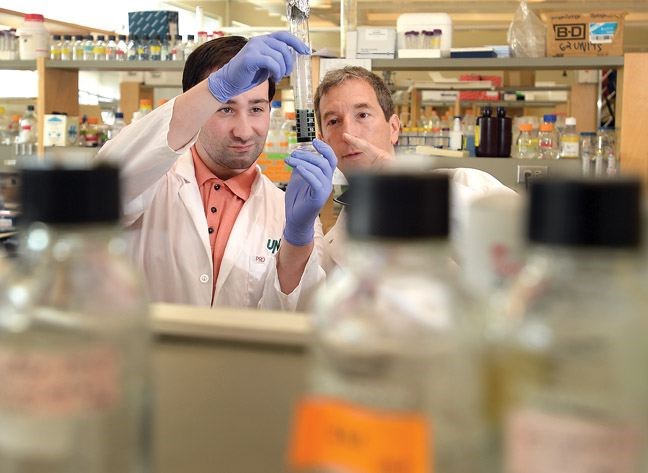A UNBC biochemistry graduate student has published the results of research that could lead to groundbreaking discoveries about what causes disease in humans.
Corbin Black's studies revolve around how genetic information flows from DNA to RNA to proteins. Protein is a crucial building block in the body.
He is specifically examining how normal splicing works in protein in a particular alga, which is too small to see through a microscope. With the help from scientists at the University of Alberta and Stanford University in California, the protein was x-rayed so the image of the protein was captured.
"The similarity between our protein, which comes from an alga, and the human protein shows that what we learn about splicing from this alga is likely to be relevant to humans," said Stephen Rader, the UNBC chemistry professor supervising Black's work.
The reason researchers studied the alga instead of human protein is because it has simpler splicing machinery.
"In humans it's exceptionally complicated - there are over 250 parts to the machinery that carries out splicing," said Rader. "What we discovered is that this particular kind of alga has only 40 parts so it's much simpler."
Splicing proteins to see what they normally look like sets a standard.
About 60 per cent of diseases that are caused by genetic mutations are due to problems of splicing, said Rader.
"It is important to understand how splicing works so we can find ways to treat these diseases," said Rader.
Black was the lead author on a research paper published in an international journal called Protein Science featuring the results. The published paper attracted attention from around the world, along with an invitation to collaborate with researchers from Berlin, Germany.
"The ultimate significance is that we determined the structure of a particular protein," said Black.
Because the structure was the same, it can be assumed that how the protein functions in the alga is how it functions in humans, added Black.
"Stephen (Rader) is studying splicing in alga and he is the only one doing that," said Black.
It's the first step of a big project, said Rader.
"It won't just be done by my lab," he said. "Other labs are working on this as well. We are part of a big group of researchers around the world who are all trying to solve this problem."



